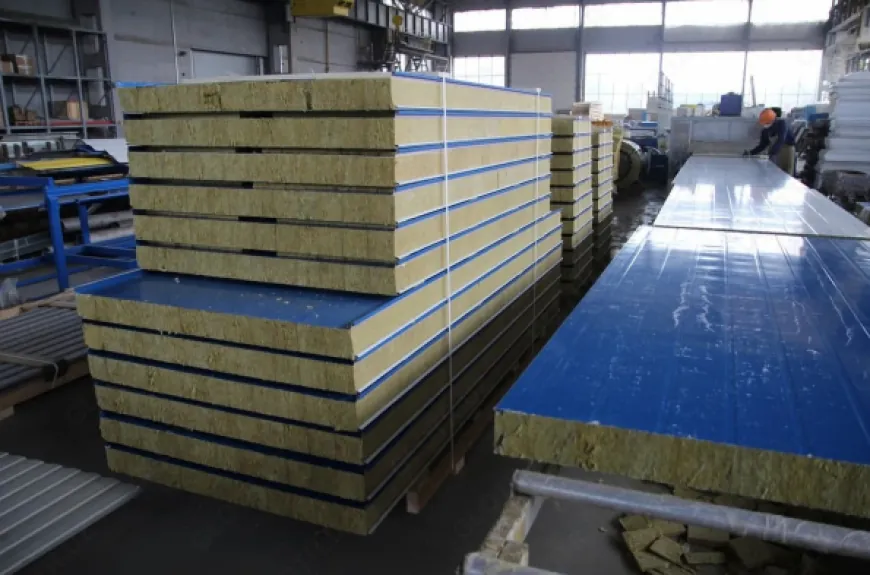Sandwich Panels Market to Demonstrate High Growth Due to Rising Demand from Construction Industry
The Global sandwich panels market is estimated to be valued at US$ 17.5 billion in 2031 and is expected to exhibit a CAGR of 9.1% over the forecast period 2024 to 2031.

The global sandwich panels market is a multibillion-dollar industry providing cost-effective and sustainable construction solutions. Sandwich panels consist of a thermally insulating core placed between two thin facings or skins and are widely used in commercial and industrial construction for walls, roofs, and doors owing to their lightweight, durability, and excellent thermal insulation properties. The core materials can be mineral wool, polyurethane foam, or expanded polystyrene, while the facings are generally composed of galvanized steel, aluminum, or fiber-reinforced plastic panels. Sandwich panels allow for speedy prefabricated construction that reduces on-site labor costs and waste.
The Global sandwich panels market is estimated to be valued at US$ 17.5 billion in 2031 and is expected to exhibit a CAGR of 9.1% over the forecast period 2024 to 2031.
The Sandwich Panels Companies are Kingspan Group, ArcelorMittal, TATA Steel, NCI Building Systems, Rautaruukki, and Metecno.
Key Takeaways
Key players operating in the sandwich panels market: Kingspan Group is the global leader in various insulation panels including sandwich panels. ArcelorMittal is another major manufacturer focusing on steel-faced sandwich panels.
Growing demand: There is increasing demand for sandwich panels from the cold storage, warehousing and logistics sectors due to their ability to provide highly insulated buildings ideal for temperature-controlled facilities at lower costs.
Global expansion: Major manufacturers are expanding their production capacities globally to capitalize on the growing infrastructure development programs in Asia Pacific and Middle East & Africa. For instance, Kingspan Group has invested in new factories in India and Saudi Arabia.
Market Key Trends
One of the Sandwich Panels Market Growth is the rapidly growing infrastructure and construction sectors globally aided by urbanization. Sandwich panels help achieve sustainable green buildings through their high insulation properties which reduce energy consumption substantially over the lifetime of the structures. Modern technologies have enabled enhanced insulation core materials such as vacuum insulated panels (VIPs) offering even better thermal performance at very small panel thickness.
Porter's Analysis
Threat of new entrants: Low capital requirement but need to compete with established players.
Bargaining power of buyers: Buyers have significant bargaining power due to availability of substitutes.
Bargaining power of suppliers: Suppliers have moderate bargaining power due to availability of substitute materials.
Threat of new substitutes: Substitutes like solid panels and insulated concrete forms pose moderate threat.
Competitive rivalry: Intense competition among existing players.
The European region dominates the Sandwich Panels Market Challenges in terms of value. Western European countries such as Germany, France and UK account for majority of the demand. The growth can be attributed to strong construction activity in these countries.
The Asia Pacific region is expected to be the fastest growing market for sandwich panels during the forecast period. Developing countries such as China and India are showing significant growth owing to rapid urbanization, infrastructure development and investment in commercial real estate sector. Government initiatives to develop smart cities and increased disposable income also contribute to the demand in the region.
Get more insights on Sandwich Panels Market
For Deeper Insights, Find the Report in the Language that You want
About Author:
Ravina Pandya, Content Writer, has a strong foothold in the market research industry. She specializes in writing well-researched articles from different industries, including food and beverages, information and technology, healthcare, chemical and materials, etc.












